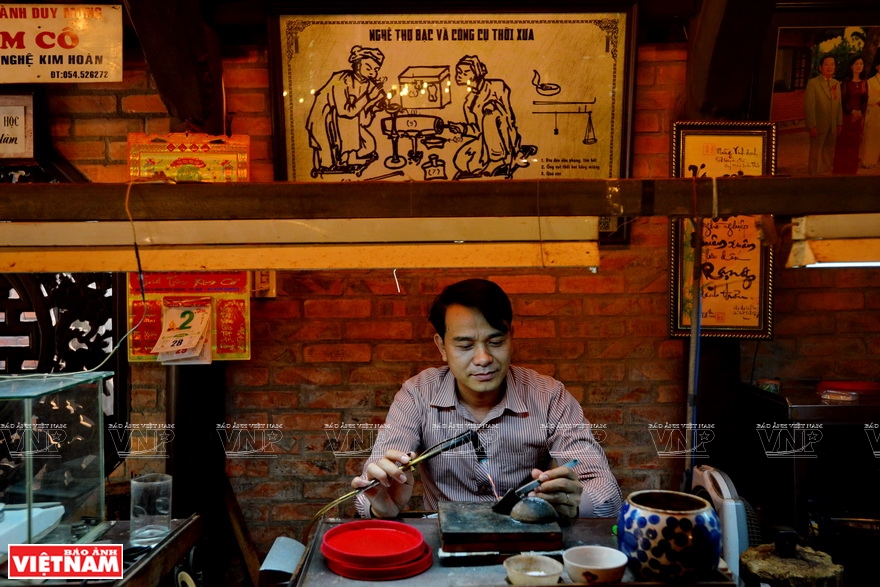
The working space of a goldsmith at Tinh Tam reminds visitors of the old craft.
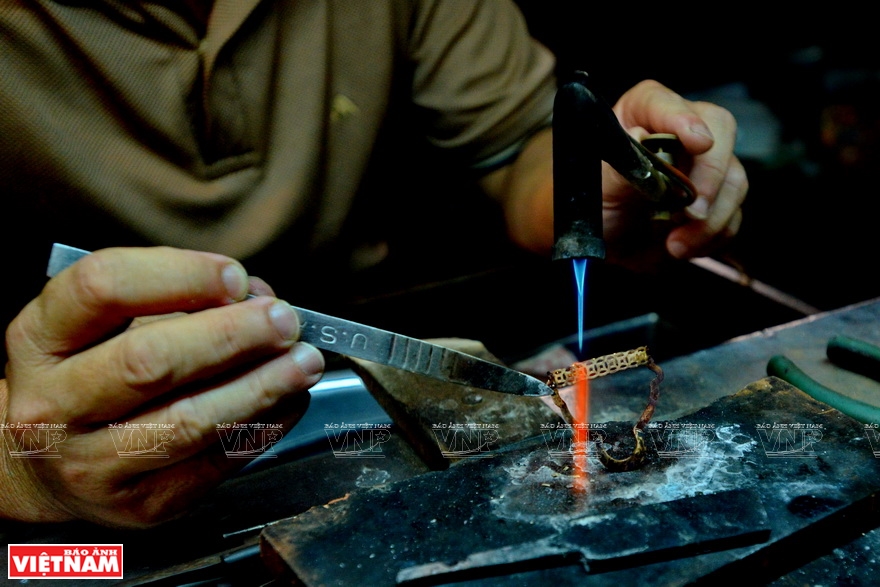
It is important for a goldsmith to control the temperature of the blast burner. Photo: Thanh Hoa
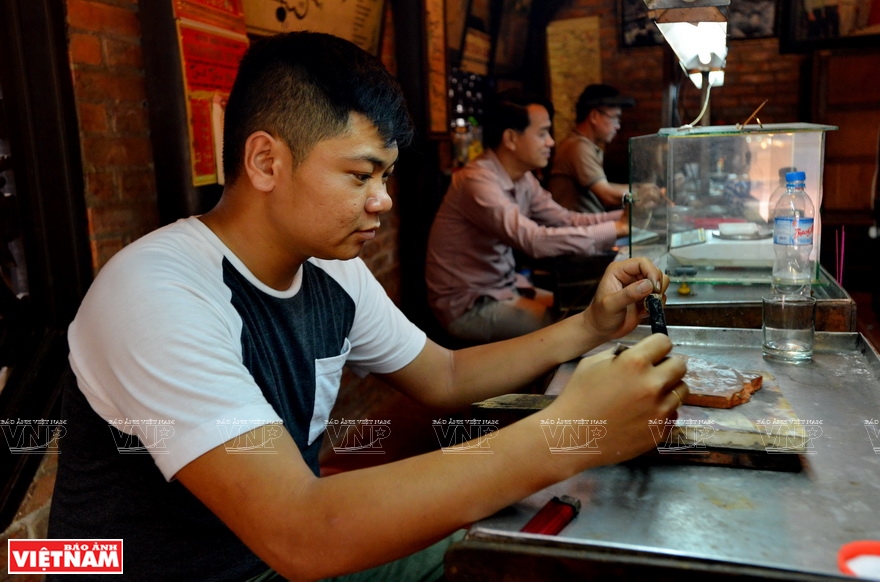
Many skilled goldsmiths in Hue are young. Photo: Thanh Hoa
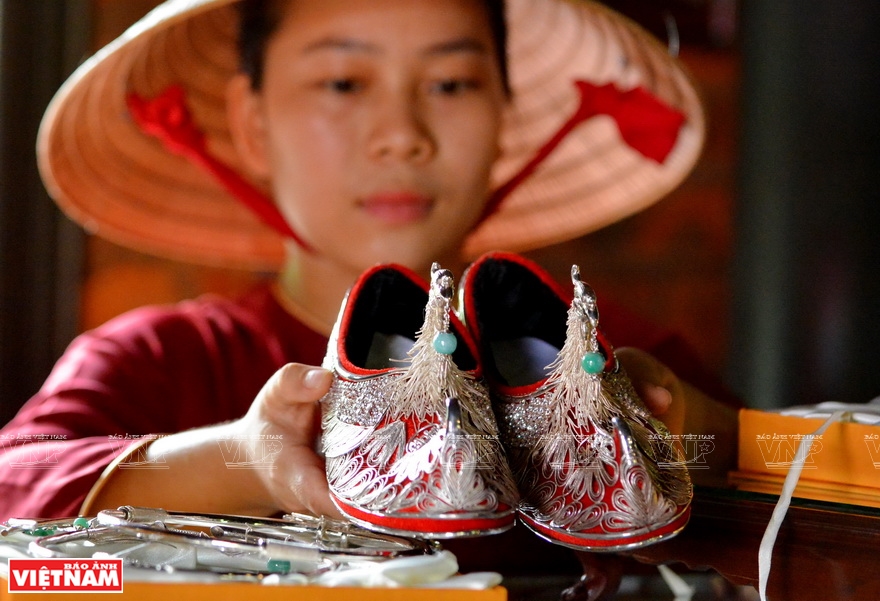
A pair of silver-carved shoes. Photo: Thanh Hoa
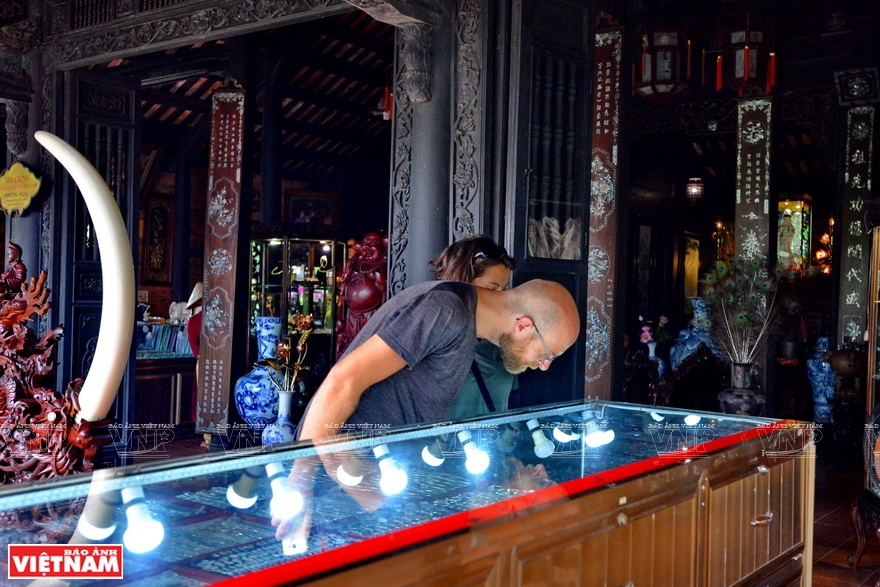
Foreigners learn about gold smithery in Hue in a space typical of the former imperial city. |